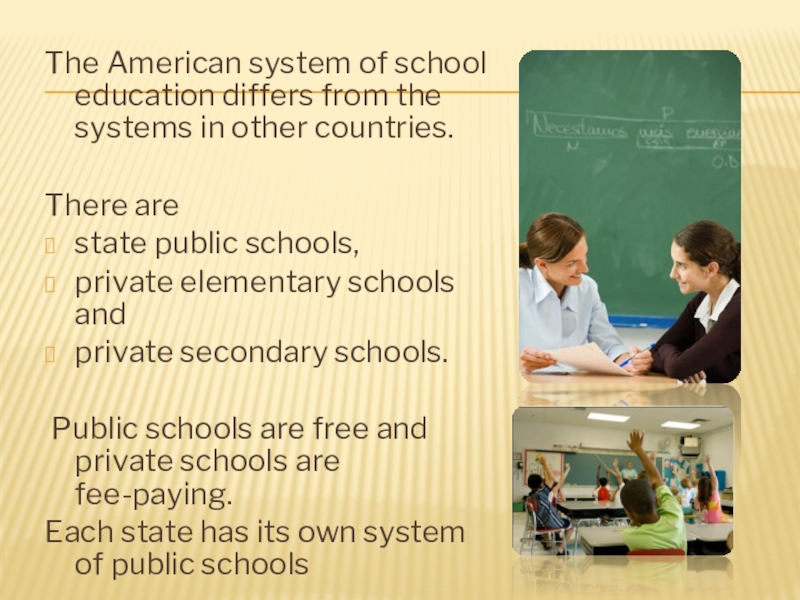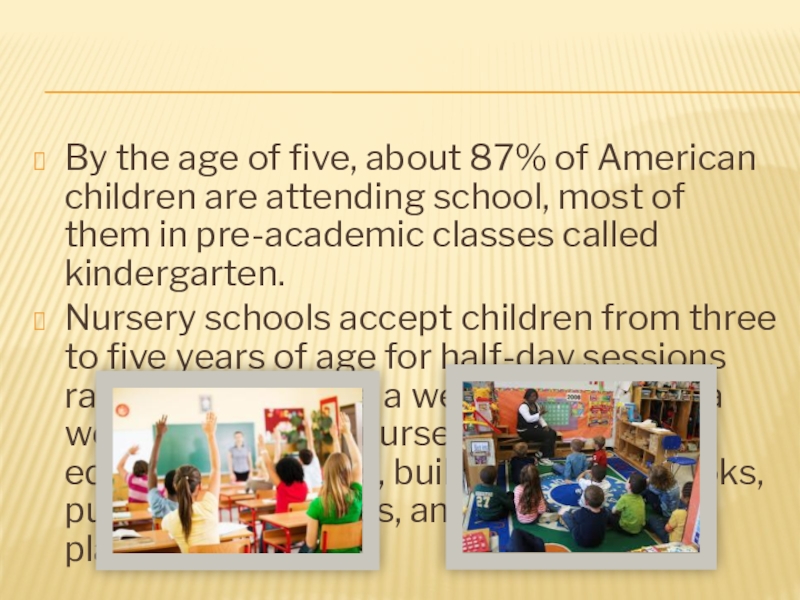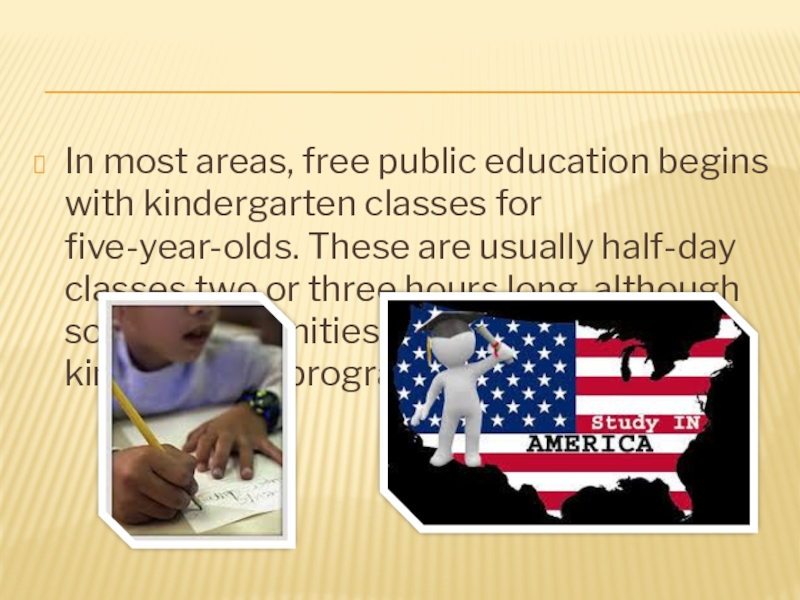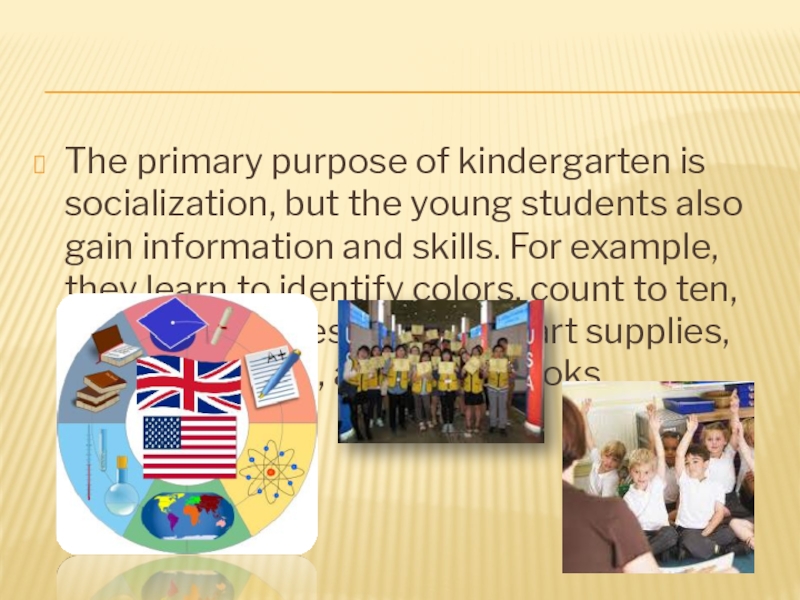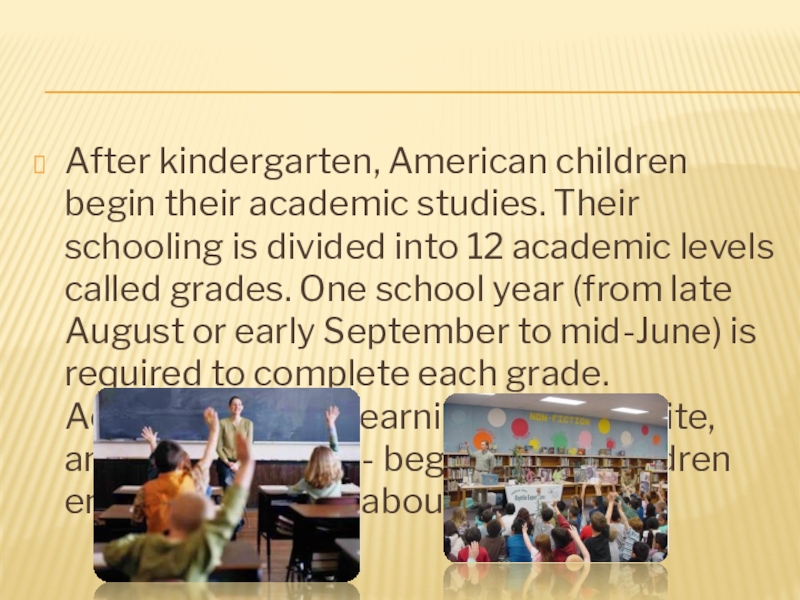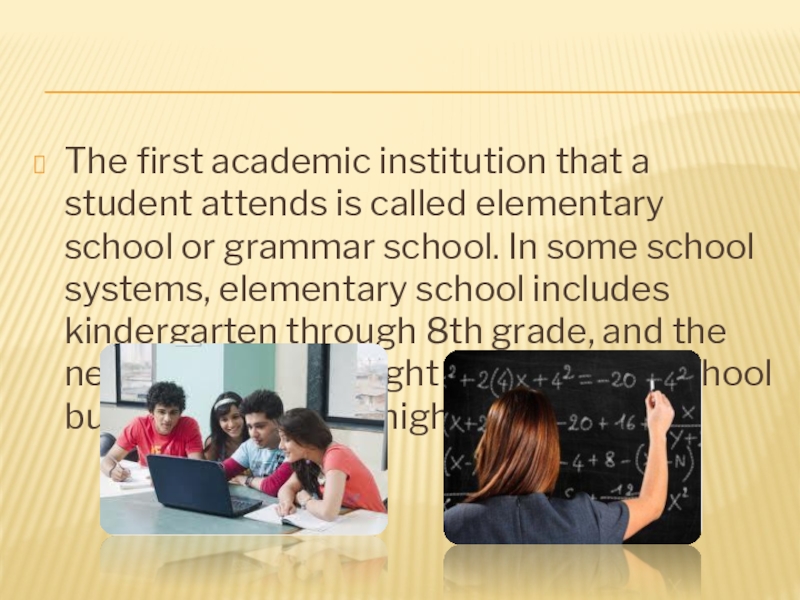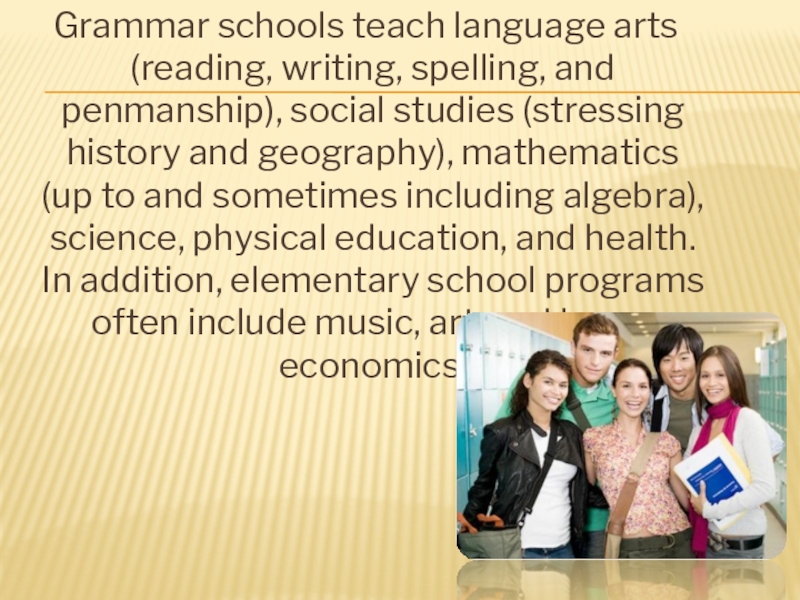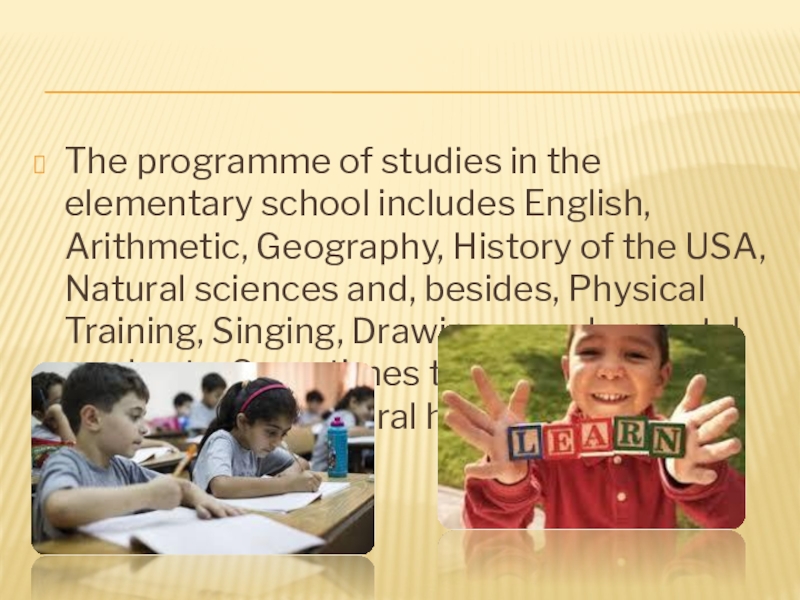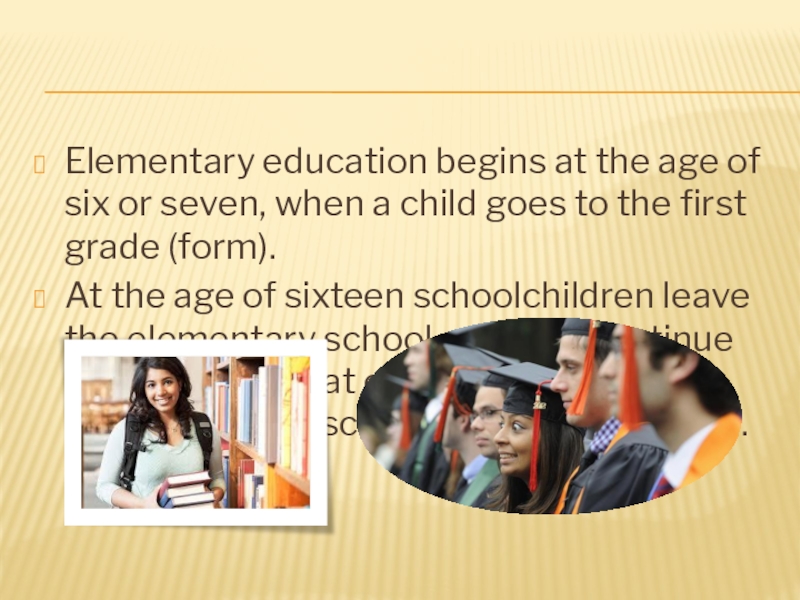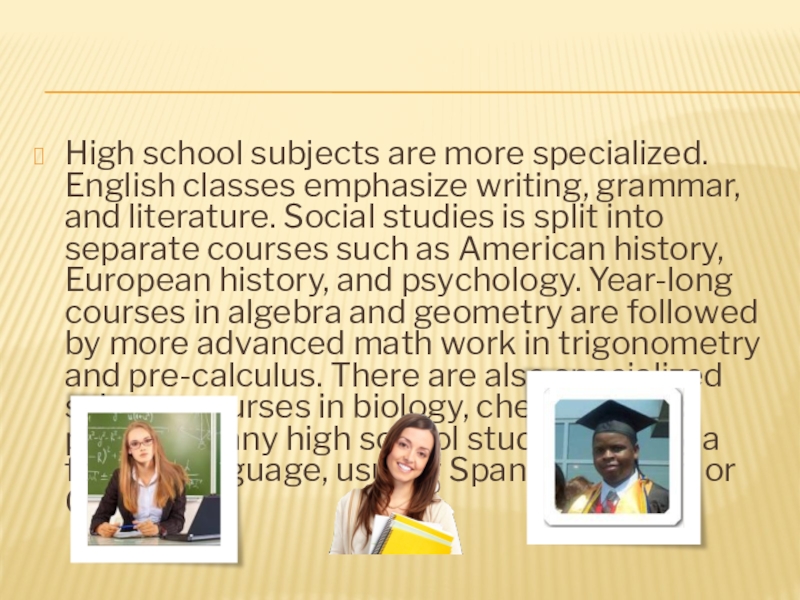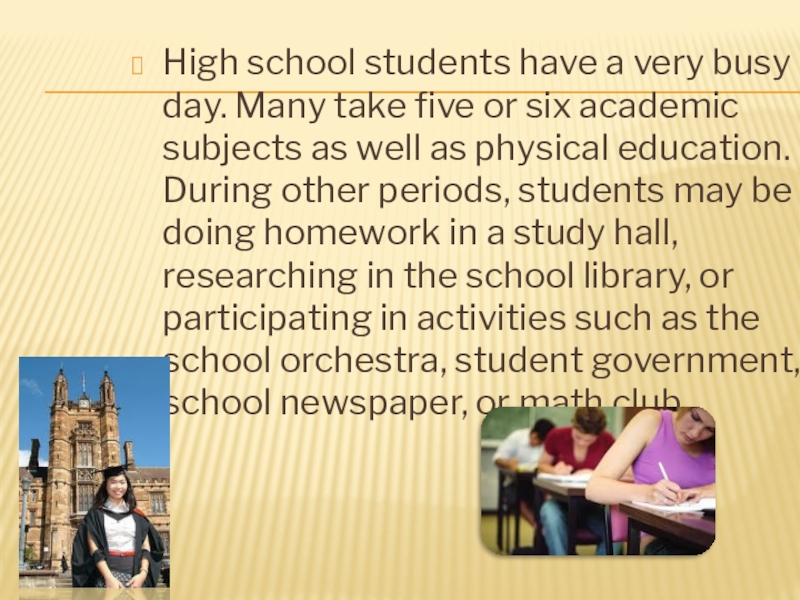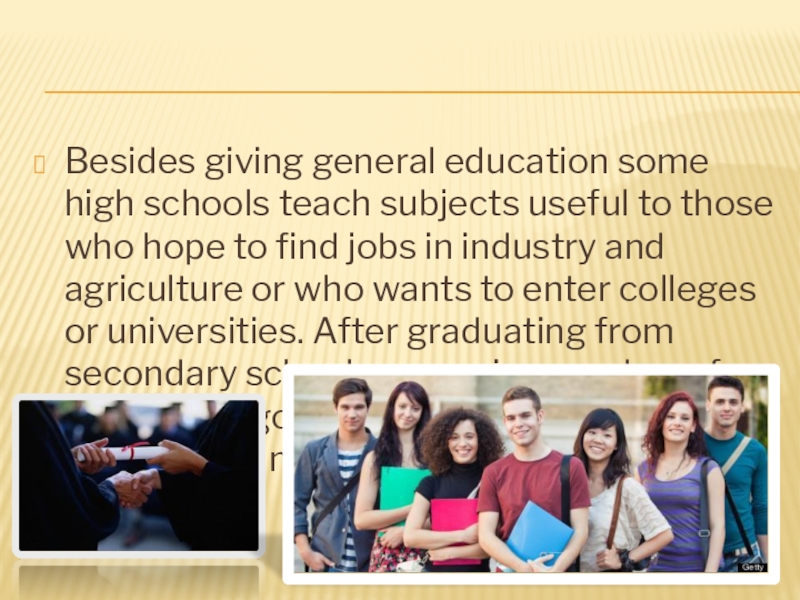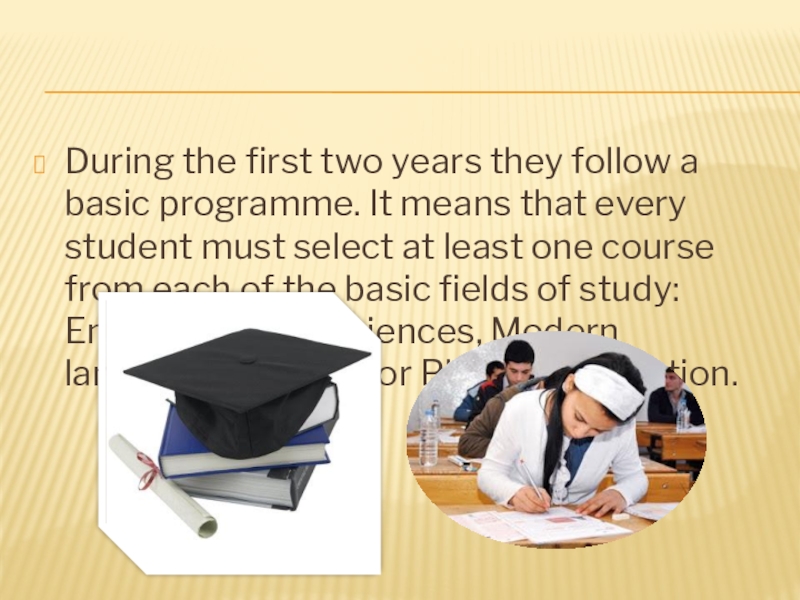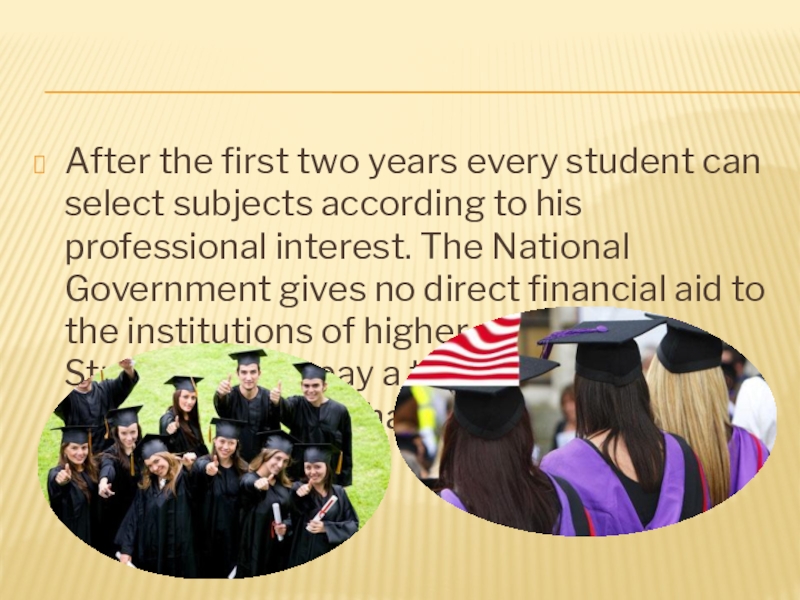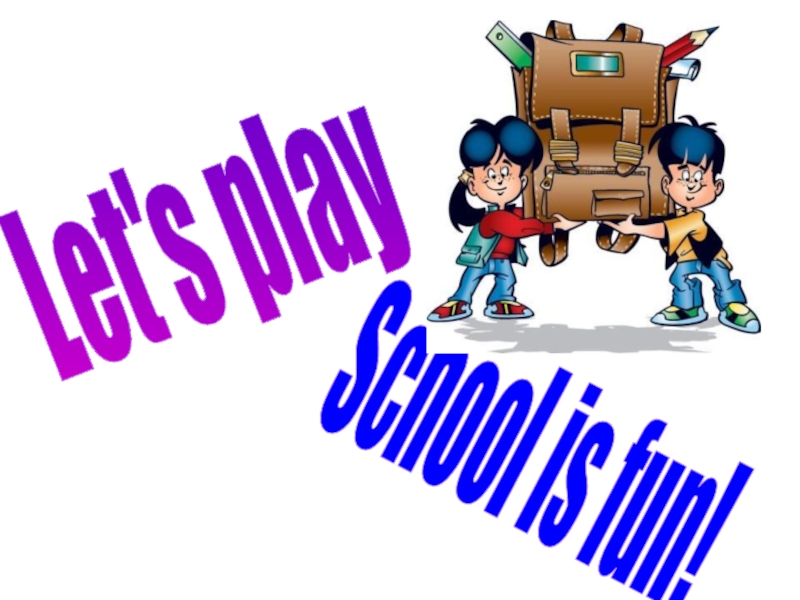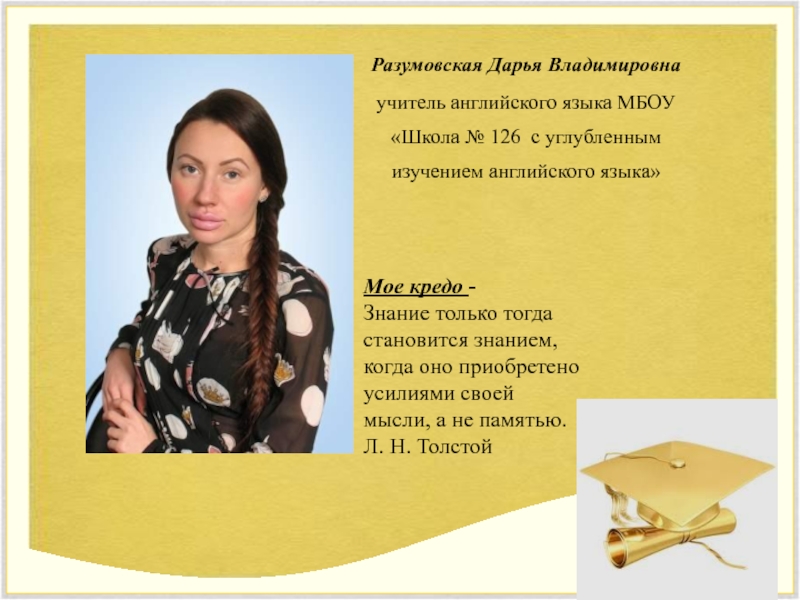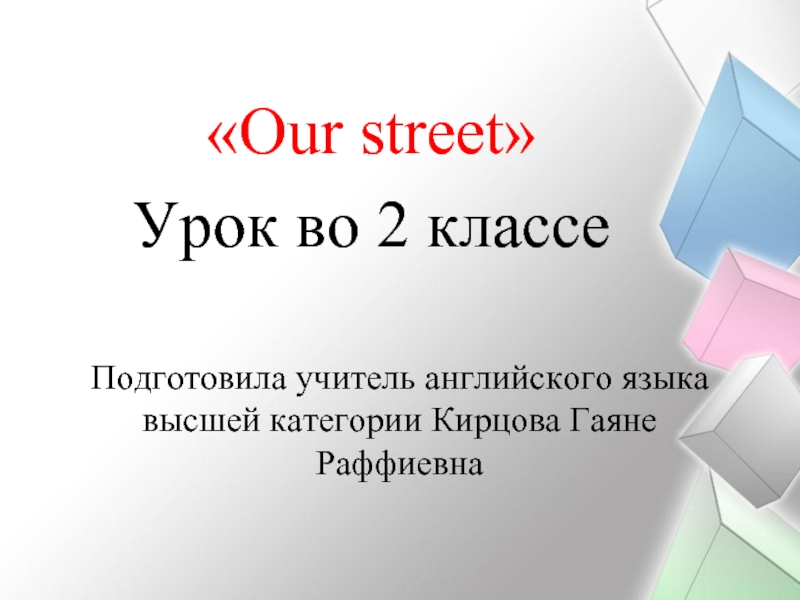Слайд 2The American system of school education differs from the systems
in other countries.
There are
state public schools,
private elementary
schools and
private secondary schools.
Public schools are free and private schools are fee-paying.
Each state has its own system of public schools
Слайд 3By the age of five, about 87% of American children
are attending school, most of them in pre-academic classes called
kindergarten.
Nursery schools accept children from three to five years of age for half-day sessions ranging from twice a week to five days a week. The typical nursery school is equipped with toys, building blocks, books, puzzles, art supplies, and an outdoor play-ground.
Слайд 4In most areas, free public education begins with kindergarten classes
for five-year-olds. These are usually half-day classes two or three
hours long, although some communities run all-day kindergarten programs.
Слайд 5The primary purpose of kindergarten is socialization, but the young
students also gain information and skills. For example, they learn
to identify colors, count to ten, print their names, work with art supplies, listen to stories, and enjoy books.
Слайд 6After kindergarten, American children begin their academic studies. Their schooling
is divided into 12 academic levels called grades. One school
year (from late August or early September to mid-June) is required to complete each grade. Academic work - learning to read, write, and do arithmetic - begins when children enter lst grade, at about age 6.
Слайд 7The first academic institution that a student attends is called
elementary school or grammar school. In some school systems, elementary
school includes kindergarten through 8th grade, and the next four years (taught in a different school building) are called high school.
Слайд 8 Grammar schools teach language arts (reading, writing, spelling, and
penmanship), social studies (stressing history and geography), mathematics (up to
and sometimes including algebra), science, physical education, and health. In addition, elementary school programs often include music, art, and home economics.
Слайд 9The programme of studies in the elementary school includes English,
Arithmetic, Geography, History of the USA, Natural sciences and, besides,
Physical Training, Singing, Drawing, wood or metal work, etc. Sometimes they learn a foreign language and general history.
Слайд 10Elementary education begins at the age of six or seven,
when a child goes to the first grade (form).
At
the age of sixteen schoolchildren leave the elementary school and may continue their education at one of the secondary schools or high schools, as they call them.
Слайд 11High school subjects are more specialized. English classes emphasize writing,
grammar, and literature. Social studies is split into separate courses
such as American history, European history, and psychology. Year-long courses in algebra and geometry are followed by more advanced math work in trigonometry and pre-calculus. There are also specialized science courses in biology, chemistry, and physics. Many high school students study a foreign language, usually Spanish, French, or German.
Слайд 12High school students have a very busy day. Many take
five or six academic subjects as well as physical education.
During other periods, students may be doing homework in a study hall, researching in the school library, or participating in activities such as the school orchestra, student government, school newspaper, or math club.
Слайд 13Besides giving general education some high schools teach subjects useful
to those who hope to find jobs in industry and
agriculture or who wants to enter colleges or universities. After graduating from secondary schools a growing number of Americans go on to higher education. The students do not take the same courses.
Слайд 14During the first two years they follow a basic programme.
It means that every student must select at least one
course from each of the basic fields of study: English, Natural sciences, Modern languages, History or Physical education.
Слайд 15After the first two years every student can select subjects
according to his professional interest. The National Government gives no
direct financial aid to the institutions of higher education. Students must pay a tuition fee. This creates a finantial hardship for some people.
Слайд 16
Many of the students have to work to
pay their expenses. Americans place a high value on education.
That's why Kennedy said, "Our progress as a nation can be no swifter than our progress in education".

